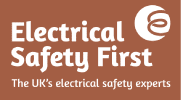Legislation and Legal Requirements
What are the Legal Requirements?
Everyone who wishes to carry out electrical work and meet all the Industry, HSE and Liability Insurance requirements, must demonstrate “Competency”. The certification requirements for “Competency” are specified by the IET document: –
Most guidelines, specifications and requirements for Ongoing Calibration Verification are based on, or refer to the Best Practice Guides produced by Electrical Safety First: –
What is “Ongoing Calibration Verification” (OCV)?
A yearly calibration certificate of an instrument will state that the instrument was within calibration parameters at that time only. It certainly could not guarantee that the instrument would still be fit for purpose at any time after that.
Ongoing Calibration Verification (OCV) is the monitoring and recording of the accuracy and consistency of test instruments from this point of a formal calibration. Maintaining confidence in the accuracy of test instruments used in the safety verification of test and inspection tasks and subsequent reporting.
It is important to be confident that test instruments are accurate and remain consistant. Instruments may become inaccurate for a number of reasons, such as simple electronic drift/failure or being dropped or impacted. In some cases an instrument itself may remain accurate but the test leads may fail, thereby affecting measurements.
Why Testing and Inspection?
Even the most experienced of electricians can make mistakes, for this reason, all electrical installations, alterations and additions should be tested, inspected and a certificate issued to the client.
The results of these test procedures must be a true representation of the installation. To ensure this the test instrument must at the time be verified as accurate, and consistent.
Hence the regulation for instruments ongoing measurement verification.
Electrical Regulations
In the electrical world there are regulations, guidelines, procedures and policies to name a few titles. To administer these there are numerous regulatory bodies that in turn rely upon issued standards such as the IET, HSE, Building and Wiring regulations. This section details a few of these areas and directions for further reading.
BS 7671 is the British Standard for Electrical Installations. Referred to by all the regulatory bodies. Currently the wiring regulations are in their 18th Edition and are adopted by BSI as BS 7671:2018+A2:2022.
The European standard IEC 60364 is an attempt to harmonize national wiring standards in an IEC standard. BS 7671 follows the section structure of IEC 60364 very closely.
Currently in version IEC 60364-1:2005
In the UK in 2004 building regulations legally enforced Part P “electrical safety in dwellings” which enabled electrical work to be regulated by law.
Updated in 2010 The Building Regulations now refer to in P1 Design and Installation of Electrical installations 2013.
Impact on Your Liability Insurance.
With the introduction of the Insurance Act 2015 , insurance companies are placed under a greater pressure to analyse the risks they are being asked to accept. The insurers will access the tradesman based on numerous risk assessments and require a minimum standard by which the contracts must be carried out.
Failure to work to these declared standards could result in the insurer using this as a reason to void the policy and avoid the claim completely. Therefore, achieving the industry recognised acknowledgement of a “competent trades-persons” is becoming a major factor on underwriting the contractor’s business.
Further Reading
Click on any Logo, to open website: –








